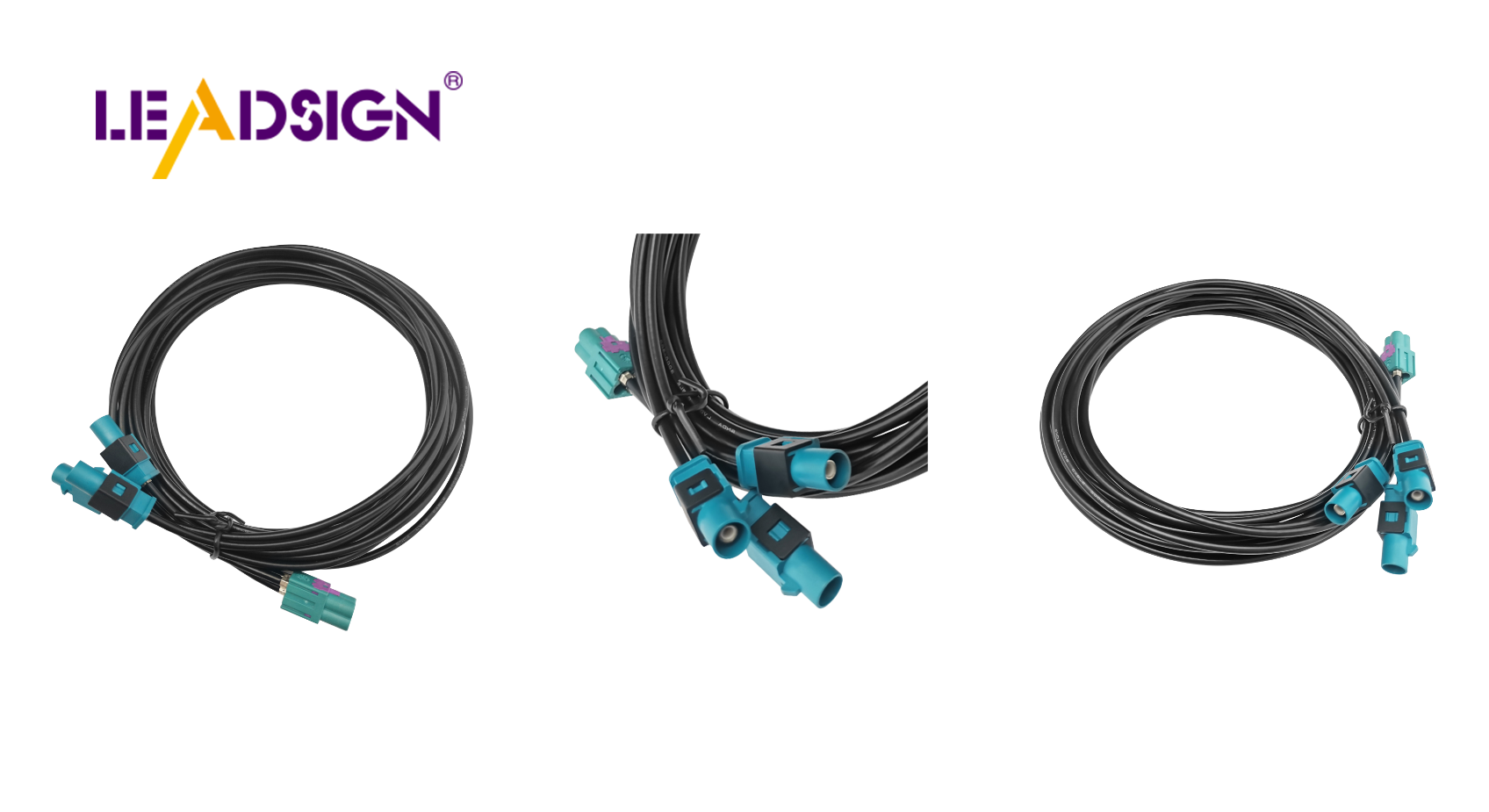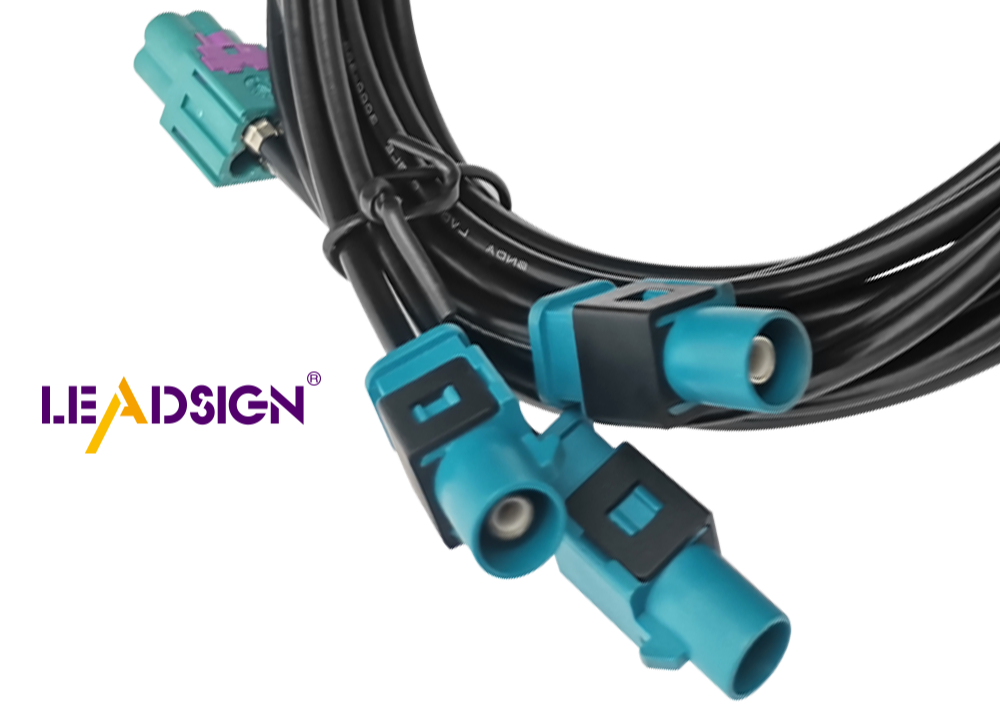How to Identify Automotive Wiring Connector Types for Replacement

Finding the right automotive wiring connector types is crucial for maintaining the functionality and safety of your car. Electronics play a significant role in a vehicle's overall cost, and utilizing the correct connectors ensures strong connections. Using incorrect connectors can lead to issues such as poor connections and compromised safety. Selecting the appropriate automotive wiring connector types ensures optimal performance of your car's electronics, reducing repair expenses and enhancing overall reliability.
Understanding Basic Characteristics of Connectors

When working with automotive wiring connector types, knowing their basic traits is key. This helps you pick the right connectors for your car, making sure they fit and work well.
Number of Pins
The number of pins in a connector is very important. Each pin carries electrical signals, and having the right number makes sure everything works properly.
How to Count Pins Accurately
To count pins right, look at the connector closely. Check the front where pins show. Count each pin carefully so you don't miss any. If there are many rows, count each row separately and add them up. This way, you avoid mistakes and choose the correct replacement.
Common Pin Configurations
Automotive wiring connector types have different pin setups. Some common ones are:
Single Row: Pins in one line.
Double Row: Pins in two lines side by side.
Multiple Rows: Pins in several lines, used in complex systems.
Knowing these setups helps you find the right connector for your needs.
Identifying the Vendor
Finding out who made a connector is important too. Knowing this helps you get replacements that fit well and are good quality.
Importance of Vendor Identification
Vendor identification matters because it ensures the connector fits and works with your car's system. Using parts from the original maker (OEM) makes sure they match and avoids problems from other parts.
Methods to Determine the Vendor
To find out who made it, look for marks or logos on the connector. These often tell who made it. If there are no marks, check your car's manual or ask the maker directly. You can also search online using details like pin count to find out who made it.
By knowing these basic traits, you can easily pick the right automotive wiring connector types for your car. This knowledge not only makes sure they fit but also boosts how safe and reliable your car's electric systems are.
Looking at the Current Part
When finding automotive wiring connector types, checking the current part is key. This means looking closely and using tools to pick the right replacement.
Looking Closely
Looking closely can tell you a lot about the connector's state and kind.
Spotting Damage You Can See
First, look for damage you can see. Cracks, rust, or color changes mean it needs replacing. Bad connectors cause weak connections, hurting your car's performance. Pigtail Pros at FindPigtails.com say spotting these early stops bigger problems.
Knowing Connector by Shape and Size
Then, check its shape and size. Connectors have special shapes and sizes to show their type. Match it with known ones to find a fit. This makes sure you get one that fits well, keeping your car's electrical system strong.
Using Tools to Check
Tools give more info on how connectors work and fit.
Using a Multimeter Tool
A multimeter is great for checking connectors. It tests if they connect well and measures resistance, making sure they work right. A multimeter shows if connections are stable and good. OEM Connector Experts say using OEM connectors ensures steady connections that a multimeter checks.
Other Helpful Tools for Finding Out
Besides a multimeter, other tools help identify connectors. A magnifying glass helps spot small things like maker logos or numbers. These help find the right replacement. Automotive Connector Testing Specialists stress meeting rules for safety and performance, so correct identification is important.
By looking at the current part carefully, you choose the right automotive wiring connector type. This keeps your car running well and makes it safer too.
Importance of Connector Pitch
What is Connector Pitch?
Meaning and Why it Matters
Connector pitch is the space between two pins in a connector. This distance matters because it helps connectors fit well in their spots. The right pitch makes sure connectors line up perfectly, keeping electrical connections stable. Pitches can be from 0.5 mm to 3.0 mm. Picking the right one is key for circuit design to work well.
Measuring Connector Pitch
To measure connector pitch, use a vernier caliper tool. It helps you find the outer size of contacts and subtracts contact width to get the pitch. Doing this helps you pick a connector with correct spacing for secure connections.
Matching Connectors Right
How Pitch Affects Fit
The pitch affects how connectors fit with other parts. If pitches don't match, they won't fit right, causing electrical problems like failures. Correct pitch keeps the system working well and stops issues like short circuits or weak links.
Checking Pitch Before Replacing
When changing a connector, always check its pitch first. Measure the old one's pitch and compare it with the new one. This step avoids mismatches and ensures the new part works properly in your system. Watching the pitch improves safety and reliability of your car's electric parts.
Helpful Hints for Picking the Right Connector
Choosing the right automotive wiring connector is very important. It keeps your car working well and safe. Here are some easy tips to help you pick the right one.
Think About Your Car Type
How Car Type Affects Connector Choice
The type of car you have changes which connectors you need. Different cars have special electric systems needing certain connectors to work right. For example, a fancy car with cool gadgets might need fast connectors, while a simple car just needs regular ones.
Examples of Connectors for Different Cars
Luxury Cars: These use fast connectors like High-Speed FAKRA-Mini, helping things like self-driving and music systems.
Standard Cars: These use regular connectors that last long and do basic jobs, like for lights and sensors.
What You Need It For
Matching Connectors to What They Do
Each part in your car has its own needs. Connectors in the engine must handle heat and shaking. But those inside for lights should be easy to put in and cheap.
Engine Parts: Use strong connectors that resist heat.
Inside Uses: Choose ones that are simple to fit in.
Tips for Lasting Reliability
For lasting reliability, use OEM (Original Equipment Manufacturer) connectors. They match your car's exact needs perfectly. They offer many good things:
Durability: Made from tough stuff that handles heat and wetness.
Easy Setup: Simple design makes putting them in easy.
Reliability: They connect well, stopping electric problems.
By thinking about these points, you can choose the best automotive wiring connector for your car. This not only fits but also makes it work better and safer.
Finding and changing automotive wiring connectors needs some steps. First, count the pins carefully and find out who made it. Then, check the part for any damage and use tools like a multimeter to test it well. Lastly, think about connector pitch and your car type to make sure they fit.
"OEM automotive connectors are key parts that make cars work better and more reliably." - Eigen
Use these steps to replace connectors right. Doing this makes your car run better and safer, keeping it up-to-date with good technology and strong parts.
See Also
Exploring Ford Fakra Connectors: A Comprehensive Overview
Understanding HSD Connectors: Essential for Automotive Sector
Significance of Modern Vehicles' Fakra Connectors

